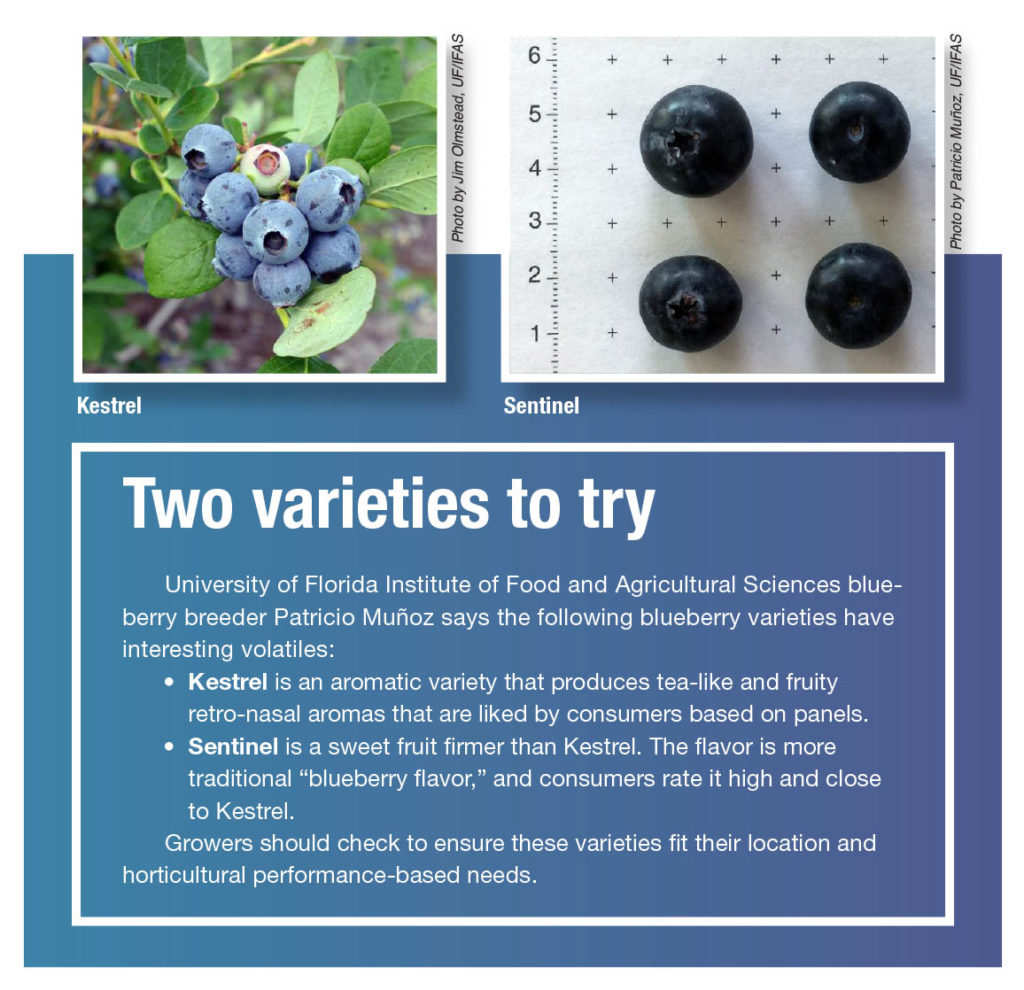
By Ulschan Bathe and Bryan Leong
When people think of superfoods, one of the first things that comes to mind is blueberries. Blueberries are a perennial crop native to North America with global production of around 1 million tons. Their commercial cultivation started in the early 1900s, and breeders have been developing better varieties ever since.
The unique look, smell and flavor of blueberries make them stand out from other superfoods. Whether it is their iconic blue color or their sweet and acidic taste, blueberries are popular across the world and a part of many peoples’ diets. While blueberries are very visually appealing, it’s what lies underneath that makes them a superfood.
COMPLEX COMPOUNDS
The superfood status is due to the many health benefits that come from the compounds that blueberries contain. These compounds include anthocyanins, proanthocyanidins and flavonoids, all of which can have antioxidant properties. There is evidence that blueberries have positive effects on diabetes, cardiovascular disease and obesity.
Besides their various potential health benefits, these compounds, in particular anthocyanins, are responsible for blueberries’ color. Anthocyanins give the fruit its intense blue color, whereas they give red or purple colors under different conditions in other plants. For instance, anthocyanins often play a role in flower color to attract pollinators and can help protect plants against stresses. While these antioxidant compounds are responsible for blueberry color, a different group of compounds gives blueberries their flavor.
The understanding of blueberry taste and aroma has advanced greatly in recent years, and scientists now know the key compounds that are involved. Previously, breeders used ratios of sugars to acids to develop better blueberry varieties. Much work has gone into optimizing the sugar to acid ratio to make a tastier fruit. This has certainly worked to some extent, but it overlooks an important fact: Much of our taste sensation is from our noses. This means that volatile compounds — the ones that evaporate in our mouth and are picked up by our nose like perfumes — are central to our perception of blueberry flavor.
Consumers agree. Surveys indicate that the volatile composition is critical to consumers’ preferences for blueberry varieties. However, more is not always better. These volatile compounds can have a good or bad effect on blueberry taste. Too much or too little of them can radically change the flavor. It’s not just about how much of one compound there is, but also about the balance with the other volatile compounds present in the fruit. This balance requires fine-tuning of a variety’s volatile compound types and contents to get the combination just right.
BREEDING BETTER BLUEBERRIES
Fine-tuning blueberry flavor is a tough task. Blueberry taste and aroma are influenced by six major volatile compounds with up to 120 total distinct volatile compounds found in some varieties. This presents a challenge to blueberry breeders because improving blueberry flavor requires fine-tuning aroma and flavor based on customer preferences obtained through surveys and purchasing patterns. While blueberry taste and aroma are influenced by the complexity of the volatile profile and numerous genes that affect this combination of flavor chemicals, there are powerful tools to help get closer to the perfect blueberry.
Some key tools are genome sequencing and volatile analysis by a technique known as gas chromatography-mass spectrometry (GC-MS). GC-MS can measure flavor compounds in many different breeding lines and varieties of blueberry. These flavor profiles can be cross-referenced with genome sequencing data to identify genes that are responsible for producing the flavor compounds. Once that link has been established, new varieties can be bred to enhance the flavor profile. The combination of these tools can speed up the breeding process by determining which genes are critical to berry flavor and can help ensure progress toward a better blueberry.
Ulschan Bathe is a postdoctoral fellow, and Bryan Leong is a postdoctoral researcher, both at the University of Florida in Gainesville.









